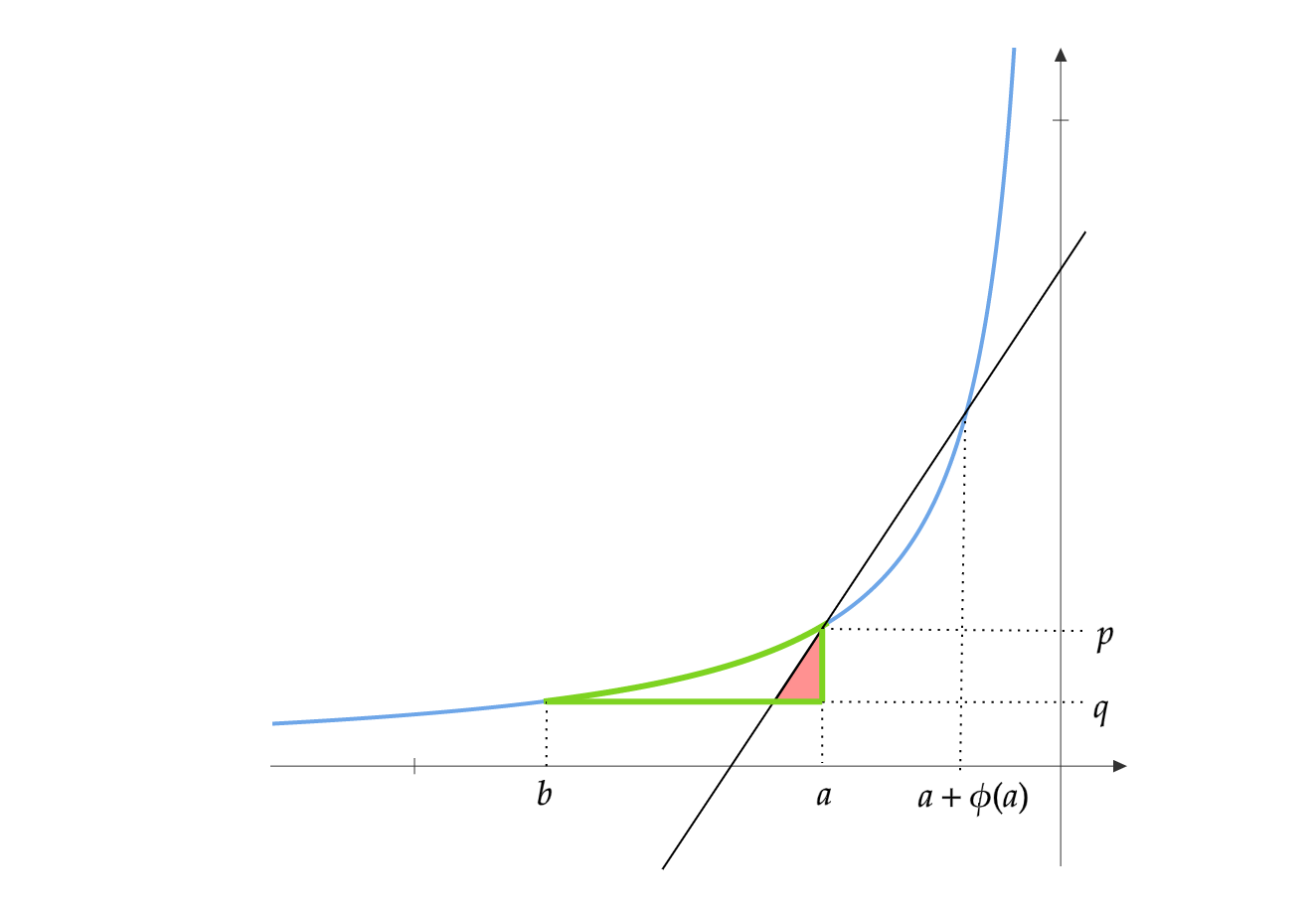Fixed point iteration for finding `(I_n+UV)^{-1}`
Let \(B=I_n+UV\), where \(U \in \mathbb{R}^{n \times m}\) and \(V \in \mathbb{R}^{m \times n}\) such that \(m>>n\). The goal is to find \(B^{-1}\). Using the Sherman–Morrison–Woodbury formula, we have:
\[B^{-1} = (I_n+UV)^{-1}= I_n - U(I_m+VU)^{-1}V\]Using the Woodbury matrix identity again:
\[(I_m+VU)^{-1} = I_m - V(I_n+UV)^{-1}U\]Substituting this in the above expression, we get:
\[(I_n+UV)^{-1} = I_n - UV + UV(I_n+UV)^{-1}UV\]Which is the same as:
\[B^{-1} = I_n - UV + UVB^{-1}UV\]This gives us a fixed point iteration for finding \(B^{-1}\). Let \(B^{-1}_{(0)} = I_n\). We apply the following fixed point equation repeatedly:
\[B^{-1}_{(k+1)} = I_n - UV + UVB^{-1}_{(k)}UV\]We obtain:
\[\begin{align} B^{-1}_{(0)} &= I_n\\ B^{-1}_{(1)} &= I_n - UV + UV(B^{-1}_{(0)})UV = I_n - UV +(UV)^2\\ B^{-1}_{(2)} &= I_n - UV+ UV(B^{-1}_{(1)})UV = I_n - UV +(UV)^2 - (UV)^3 + (UV)^4\\ &\vdots\\ B^{-1}_{(k)} &= \sum_{i=0}^{2k} (-1)^i (UV)^i\\ \end{align}\]\(B^{-1} =\lim_{k \to \infty} B^{-1}_{(k)}\) if and only if \(B(\lim_{k \to \infty} B^{-1}_{(k)}) = (\lim_{k \to \infty} B^{-1}_{(k)}) B = I_n\)
Consider \(B(\lim_{k \to \infty} B^{-1}_{(k)})\)
\[\begin{align} B(\lim_{k \to \infty} B^{-1}_{(k)})&=\lim_{k \to \infty} BB^{-1}_{(k)}\\ &=\lim_{k \to \infty} (I_n+UV)\left(\sum_{i=0}^{2k} (-1)^i (UV)^i \right)\\ &= \lim_{k \to \infty} \sum_{i=0}^{2k} (-1)^i (UV)^i + UV \sum_{i=0}^{2k} (-1)^i (UV)^i \\ &=\lim_{k \to \infty} \sum_{i=0}^{2k} (-1)^i (UV)^i + \sum_{i=0}^{2k} (-1)^i (UV)^{i+1}\\ &= \lim_{k \to \infty} \sum_{i=0}^{2k} (-1)^i (UV)^i + \sum_{i=0}^{2k} (-1)^i (UV)^{i+1}\\ &= \lim_{k \to \infty} I_n + (UV)^{2k+1}\\ &= I_n + \lim_{k \to \infty}(UV)^{2k+1} \end{align}\]If we consider \((\lim_{k \to \infty} B^{-1}_{(k)})B\), we also get the same expression. So, we must have that \(I_n = I_n + \lim_{k \to \infty}(UV)^{2k+1}\) i.e, \(\lim_{k \to \infty}(UV)^{k} = 0\)
The matrix \(UV\) is said to be Convergent if \(\lim_{k \to \infty}(UV)^{k} = 0\). The necessary and sufficient condition for \(UV\) to be convergent is that its Spectral radius (largest absolute value of its eigenvalues) is strictly less than 1.
So, this fixed point iteration will find \((I_n+UV)^{-1}\) if and only if the spectral radius of \(UV\) is strictly less than 1.
